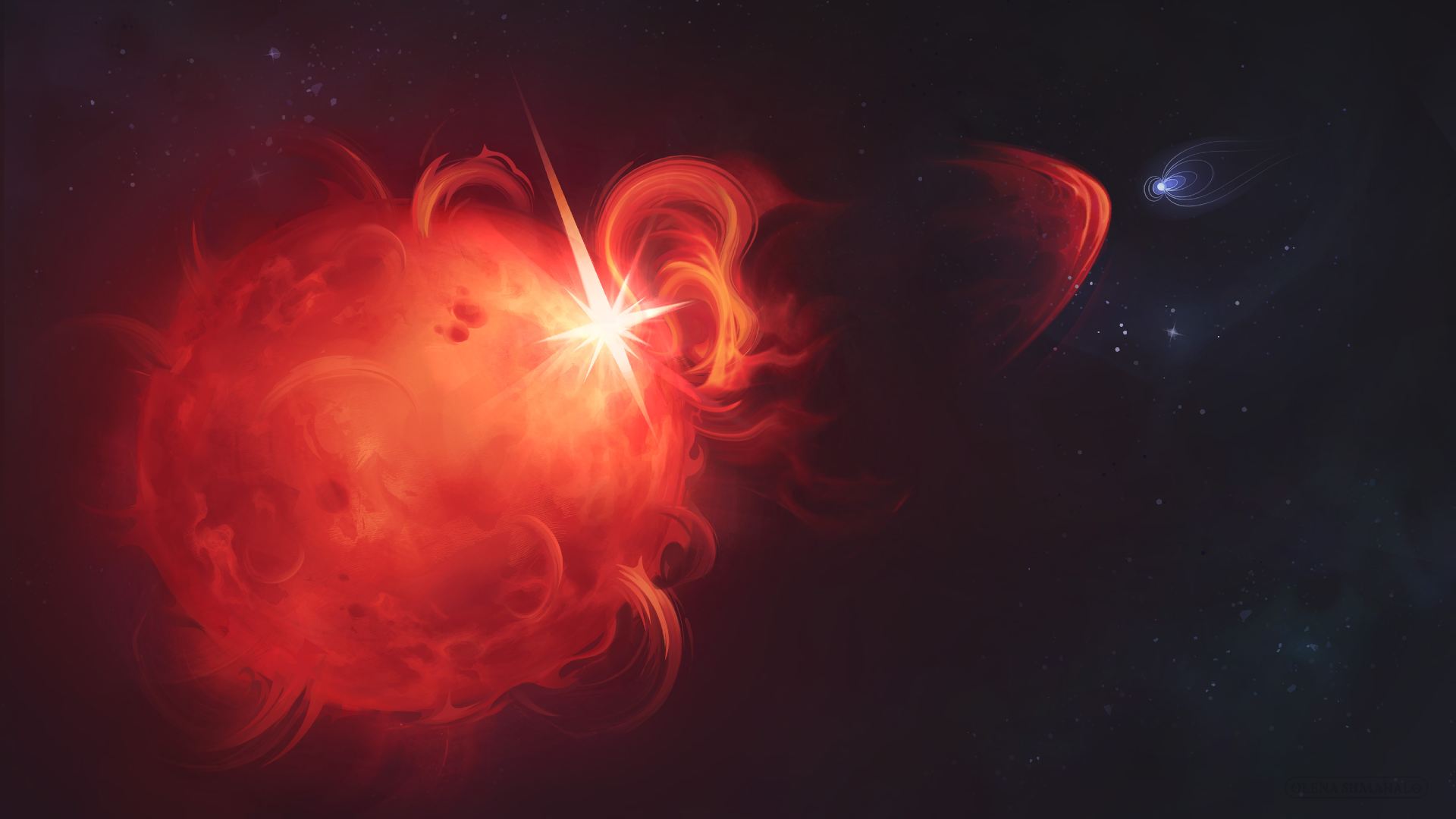Copyright Space.com

Thanks to the European Space Agency (ESA) spacecraft XMM-Newton, astronomers have seen a powerful explosion of plasma erupting from a distant star for the first time. We have seen (and felt) plenty of these coronal mass ejections (CMEs) from the sun, but even though we have long thought other stars expel such powerful outflows of superheated gas and magnetic field, astronomers had never before spotted them in any convincing way. This first extra-solar CME, which erupted from a red dwarf star, wasn't any run-of-the-mill stellar blast either. This CME was dense enough and carried enough energy to strip away the atmosphere of any closely orbiting planet, with the ejected material traveling at 5.4 million miles per hour (2,400 kilometers per second). That speed, around 3,500 times as fast as a Lockheed Martin F-16 jet fighter, is something that is only observed in around 1 in 20 CMEs from our sun. The atmosphere-stripping potential of this outburst means the observation of this CME could help astronomers better refine which extrasolar planets, or exoplanets, orbiting distant stars are capable of supporting life. "Astronomers have wanted to spot a CME on another star for decades," team member Joe Callingham of the Netherlands Institute for Radio Astronomy (ASTRON) said in a statement. "Previous findings have inferred that they exist, or hinted at their presence, but haven’t actually confirmed that material has definitively escaped out into space. We’ve now managed to do this for the first time." The team's research was published on Wednesday (Nov. 12) in the journal Nature. The discovery of this extra-solar CME was aided by the Low-Frequency Array (LOFAR) radio telescope, which is capable of detecting radio signals that are created by CMEs when they ripple through the outer layers of stars and emerge into interplanetary space. This creates a shock wave and an associated telltale burst of light in the radio wave region of the electromagnetic spectrum. "This kind of radio signal just wouldn’t exist unless material had completely left the star’s bubble of powerful magnetism," Callingham said. "In other words, it's caused by a CME." This extra-solar CME was first spotted in data from LOFAR thanks to a new data processing technique. XMM-Newton was then used to determine the temperature of the star that created it, its rotational speed, and its brightness in X-ray light. This revealed that this red dwarf, located around 40 light-years away, has around half the mass of the sun, but rotates around 20 times faster than our star and has a magnetic field around 300 times more powerful than the solar magnetic field. "We needed the sensitivity and frequency of LOFAR to detect the radio waves," team member David Konijn, a PhD student at ASTRON, explained. "And without XMM-Newton, we wouldn’t have been able to determine the CME’s motion or put it in a solar context, both crucial for proving what we’d found. Neither telescope alone would have been enough – we needed both." This research could also help us better understand the CMEs launched by the sun and how they drive space weather around Earth. "XMM-Newton is now helping us discover how CMEs vary by star, something that’s not only interesting in our study of stars and our sun, but also our hunt for habitable worlds around other stars," said Erik Kuulkers, an ESA XMM-Newton Project Scientist. "It also demonstrates the immense power of collaboration, which underpins all successful science. The discovery was a true team effort, and resolves the decades-long search for CMEs beyond the sun." CMEs and the search for life The fact that the CME was fast and dense enough to strip away a planetary atmosphere also adds additional information to the criteria that define what a habitable planet is. "This work opens up a new observational frontier for studying and understanding eruptions and space weather around other stars," Henrik Eklund, an ESA at the European Space Research and Technology Centre (ESTEC) in Noordwijk, The Netherlands, said. "We're no longer limited to extrapolating our understanding of the sun's CMEs to other stars. It seems that intense space weather may be even more extreme around smaller stars – the primary hosts of potentially habitable exoplanets. This has important implications for how these planets keep hold of their atmospheres and possibly remain habitable over time." Currently, to be considered habitable, a planet has to sit in the zone around its star that is neither too hot nor too cold to support liquid water, known as the habitable or "Goldilocks" zone. But, if the star at the heart of that zone is particularly active and is throwing out violent and frequent CMEs, not even a stable orbit in the Goldilocks zone will help it sustain an atmosphere, and thus the conditions needed for life to prosper. That is a significant discovery because red dwarf stars like this one are the most common stars in the Milky Way. Thus, more of these stars than was previously believed may be stripping their orbiting planets of their atmospheres.



